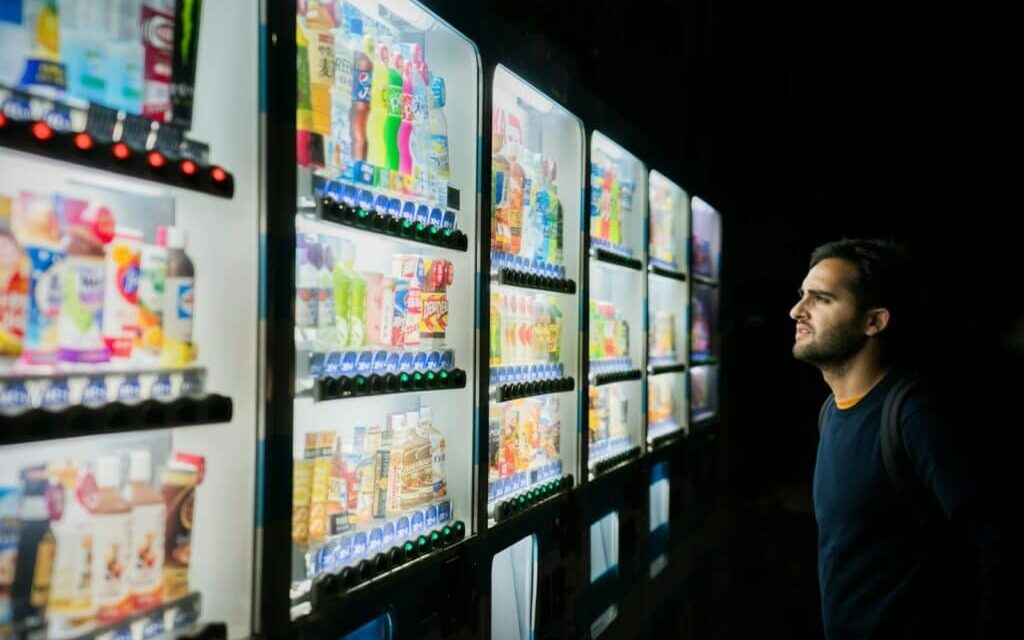Photo by Victoriano Izquierdo on Unsplash
By Dennis Limmer
Source: retailwire.com, September 2024
The beverage industry is facing challenges in the market and is in need of improvement across multiple channels.
According to IBISWorld, the decline in per capita soft drink consumption has significantly affected soda producers’ performance. Both regular and diet sodas have seen a drop in demand as consumers increasingly opt for healthier beverage choices, largely due to media reports highlighting the negative health impacts of sugary drinks. Although the rising popularity of energy drinks has provided some support to soda producers, it hasn’t been sufficient to drive overall revenue growth.
Specifically, the company reported that “industry revenue has declined at a CAGR of 1.5% over the past five years, to reach an estimated $42.0bn in 2024.”
Beverage Marketing Corporation also shared that although beverage sales in the U.S. still grew swiftly last year, volume declined compared to the year before, and elevated prices likely played a role. Inflation continued to be significant, and retail sales in 2023 did not increase at the same pace as in the previous two years. After exceeding 36 billion gallons in 2022, total liquid refreshment beverage volume dropped slightly below that mark last year.
In response, beverage brands have been looking for ways to compensate in order to once again bolster sales. One main path to success they have been utilizing is partnering with other brands, often across industries.
GlobalData explained recently that if beverage companies want to differentiate themselves, they need to innovate beyond their traditional markets. Major brands are increasingly partnering for innovative product launches to enhance marketing and drive sales. For instance, as previously reported, a collaboration between The Coca-Cola Company and Mondelez resulted in a limited-edition cola inspired by Oreo cookies, along with Oreo-flavored Coca-Cola cookies.
The data analytics company noted that these partnerships tap into existing fan bases to create excitement around products. It also highlighted Coca-Cola’s Fanta Zero Afterlife, a Halloween-themed apple drink featuring Beetlejuice packaging, as another example of engaging consumers.
Launching limited-edition flavors like this can generate urgency, motivating consumers to purchase before the product disappears. GlobalData reported that the “impact of these collaborations and limited-edition products is significant.”
GlobalData’s Q2 2024 global consumer survey revealed that consumers value unique product features, with 60% considering them “essential” or “nice to have,” illustrating the effectiveness of limited-edition offerings. With the global carbonates market projected to reach $521 billion by 2029, brands are increasingly pursuing creative partnerships to capture market share.
On a bright note for the industry, Forbes highlighted the rapid expansion of the ready-to-drink (RTD) beverage market, fueled by growing consumer demand for convenience, diverse options, and innovation.
RTDs have emerged as one of the standout success stories in the global alcoholic beverage industry, being the “only major category to record volume growth (+2%) in 2023,” coupled with a significant 6% rise in value, according to data from IWSR. However, the category remains highly fragmented and diverse, resisting a universal, one-size-fits-all strategy.
Emily Neill, COO of market research for IWSR, also explained that RDT brands face shorter product life cycles than traditional beverages, posing challenges for beer and spirits companies. Each market has unique taste preferences, making it difficult for a single RTD brand to succeed internationally. For example, a popular cocktail flavor in Mexico may not resonate with consumers in Brazil or Argentina. IWSR’s research highlights significant variations in flavor preferences across major beverage alcohol markets, complicating expansion efforts for RTD brands.
However, brands need to consider more than just flavor in terms of authenticity and brand appeal.
“We think that customers are tired of innovation just being more flavors. The innovation that we see winning and that we think will lead the long-term owners of the category are the brands that innovate on the best route to market (easy to find at right price for target customer) and the best brand experience that customers want to align with.”
Evan Burns, co-founder and CEO of The Finnish Long Drink, via Forbes
Circana has a few suggestions. A new analysis from the market research company highlights significant shifts in the beverage industry, creating opportunities for brands and retailers:
- Health-conscious demand: Consumers increasingly seek functional and convenient beverages, with rising competition from private labels and e-commerce channels.
- Market growth and innovation: The €160 billion Total Beverages market grew by 2.4% last year, driven by innovation in non-alcoholic options like functional and plant-based drinks.
- Sustainability and affordability: Nearly half of consumers prioritize eco-friendly packaging. Economic pressures lead to greater demand for promotions and private-label products.
- At-home experiences: The trend of “insperiences” (bringing “out-of-home experiences into the home”) is reshaping consumer engagement through home-based wine tastings and cocktail kits.
- Social responsibility: Brands are enhancing their image through partnerships focused on sustainability and promoting low/no-alcohol options, appealing to socially conscious consumers.

